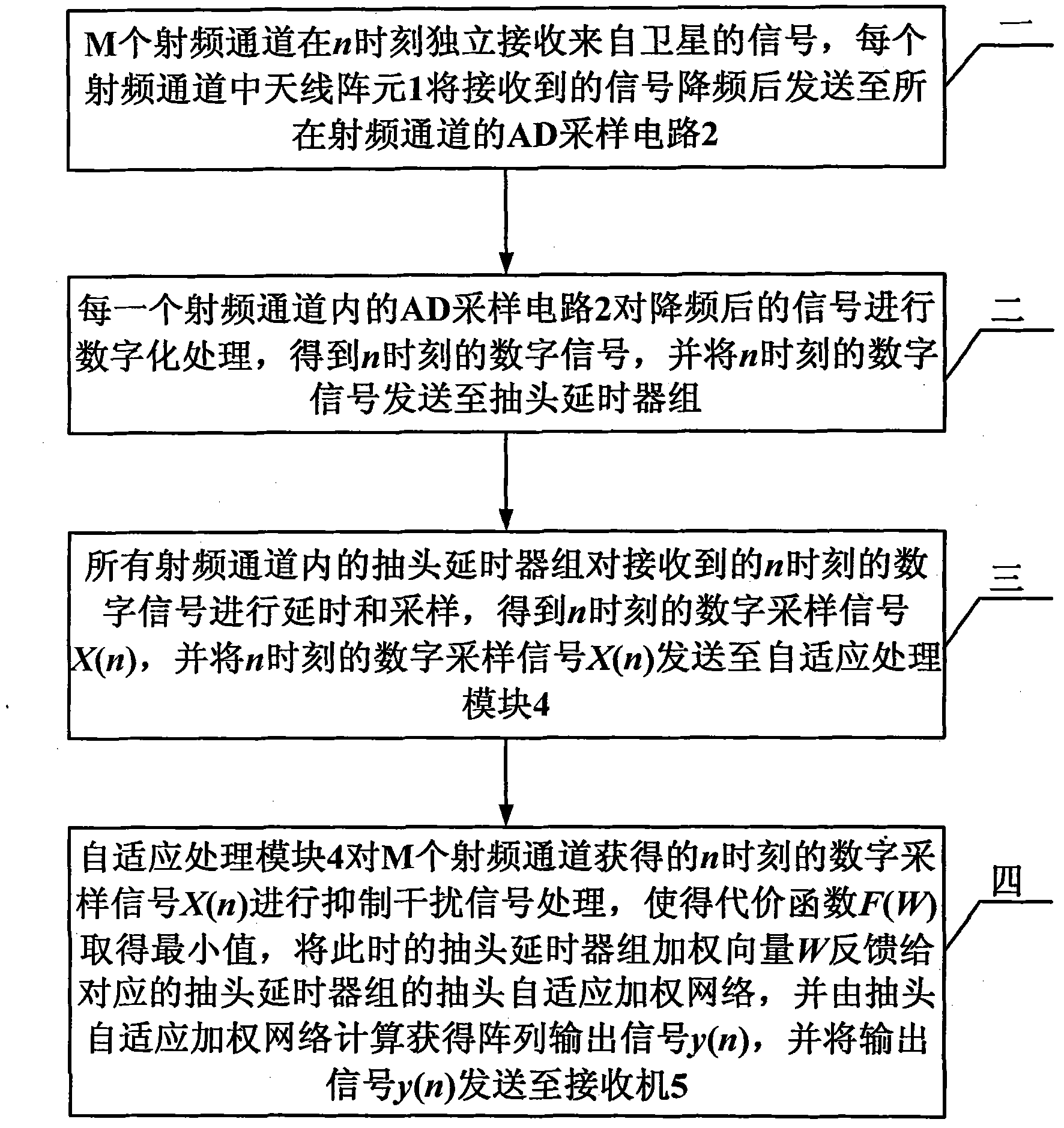Blind adaptive space-time array anti-interference method for navigation receiver
A navigation receiver, blind adaptive technology, applied in the field of anti-jamming, can solve problems such as large amount of calculation and error, and achieve the effect of reducing the amount of calculation
- Summary
- Abstract
- Description
- Claims
- Application Information
AI Technical Summary
Problems solved by technology
Method used
Image
Examples
specific Embodiment approach 1
[0028] Specific implementation mode 1. Combination figure 1 and figure 2 Description of this embodiment, the navigation receiver blind adaptive space-time array anti-jamming method, it is completed based on the array antenna signal processing system, the array antenna signal processing system includes an adaptive processing module 4, a receiver 5 and M radio frequency channels, each radio frequency channel is composed of an antenna array element 1, an AD sampling circuit 2 and a tap delayer group, the tap delayer group is composed of N tap delayer 3 in series, and the M radio frequency channels The structure is the same, the signal output end of the antenna array element 1 in each radio frequency channel is connected with the signal input end of the AD sampling circuit 2, and the signal output end of the AD sampling circuit 2 is connected with the signal input end of the tap delayer group, the said The adaptive adjustment signal output end of the tap delayer group is connect...
specific Embodiment approach 2
[0036] Specific embodiment two, combine Figure 5 This embodiment is described. This embodiment is a further description of Embodiment 1. In Embodiment 1, the arrangement of antenna elements 1 is a circular array antenna array structure.
specific Embodiment approach 3
[0037] Specific embodiment three, combine Figure 5 Describe this embodiment, this embodiment is a further description of the second specific embodiment, the radius of the circular array antenna array structure is R, and M antenna elements 1 are provided, where M is an odd number, and one antenna element 1 is arranged at the center of the circle , M-1 antenna elements 1 are symmetrical oscillators arranged at equal intervals, and the distance from the antenna element 1 at the center of the circle is the radius R.
PUM
 Login to View More
Login to View More Abstract
Description
Claims
Application Information
 Login to View More
Login to View More - R&D
- Intellectual Property
- Life Sciences
- Materials
- Tech Scout
- Unparalleled Data Quality
- Higher Quality Content
- 60% Fewer Hallucinations
Browse by: Latest US Patents, China's latest patents, Technical Efficacy Thesaurus, Application Domain, Technology Topic, Popular Technical Reports.
© 2025 PatSnap. All rights reserved.Legal|Privacy policy|Modern Slavery Act Transparency Statement|Sitemap|About US| Contact US: help@patsnap.com



